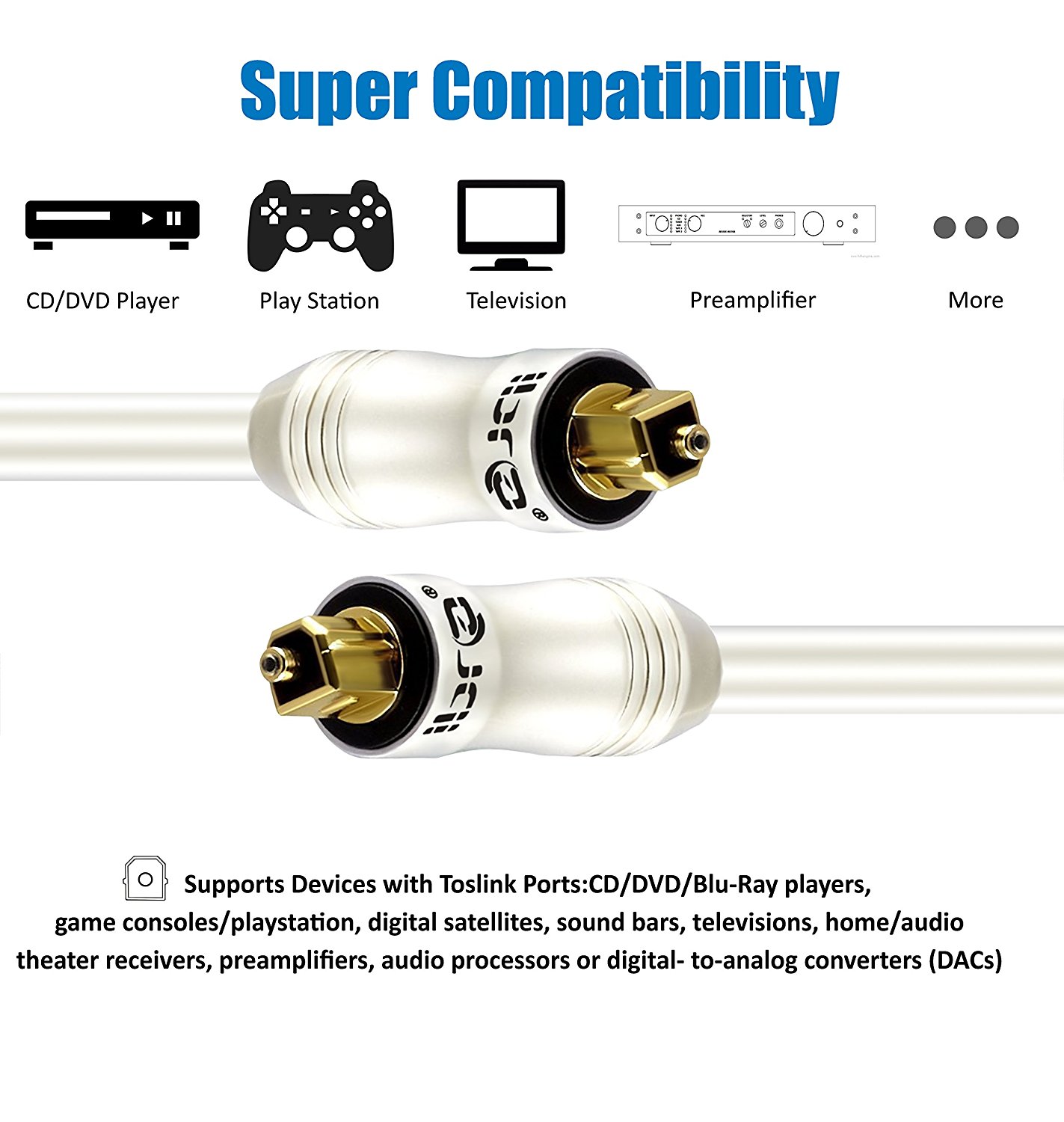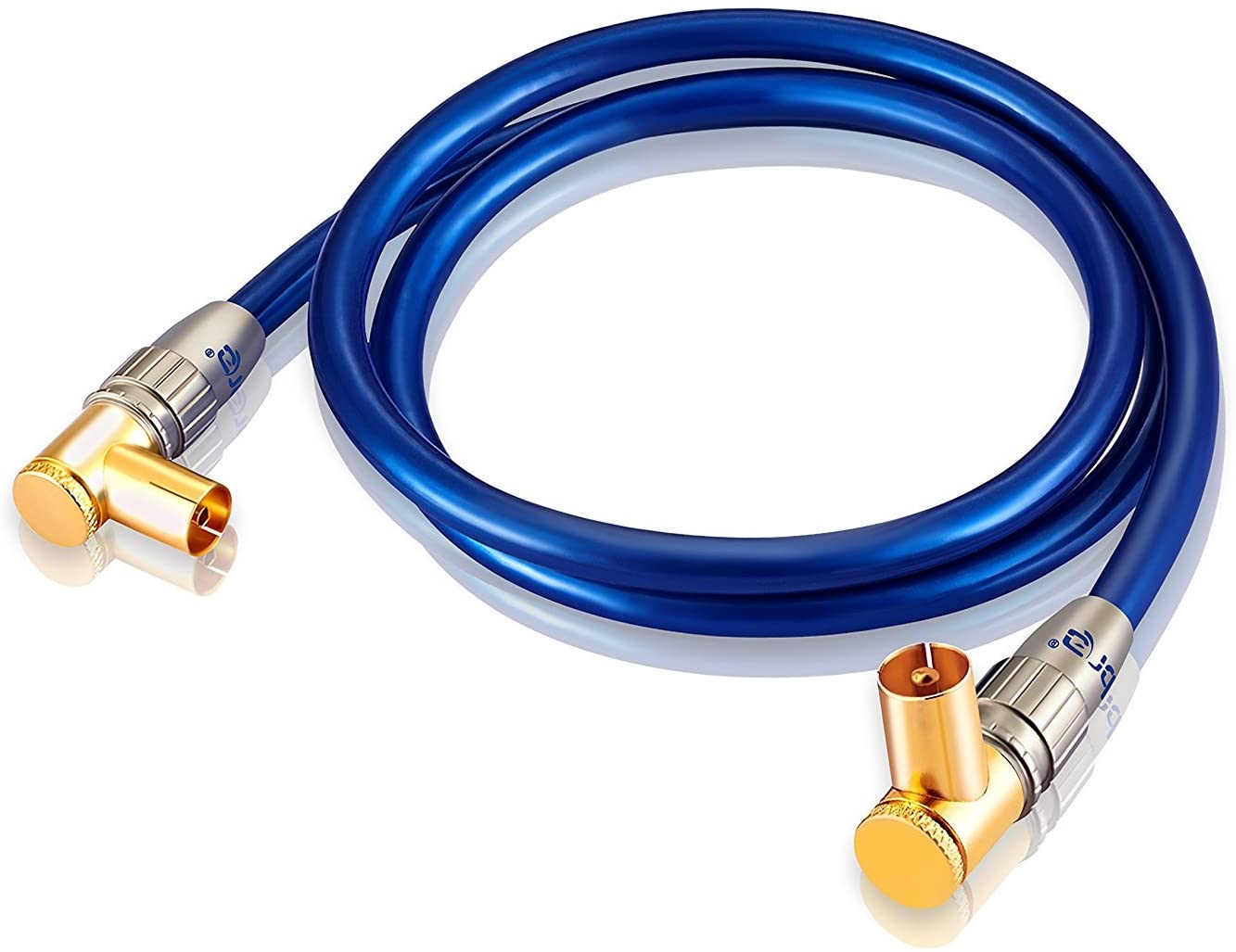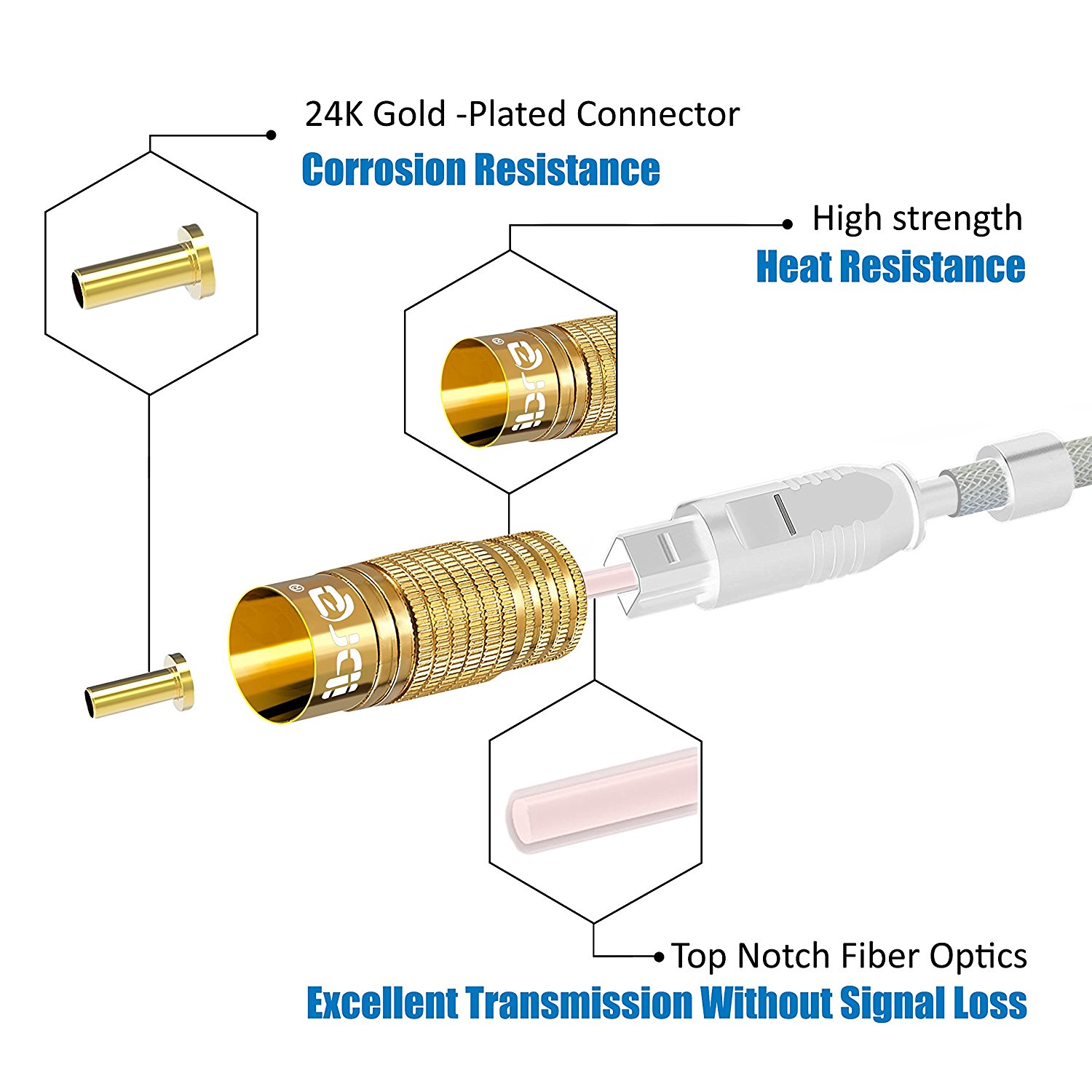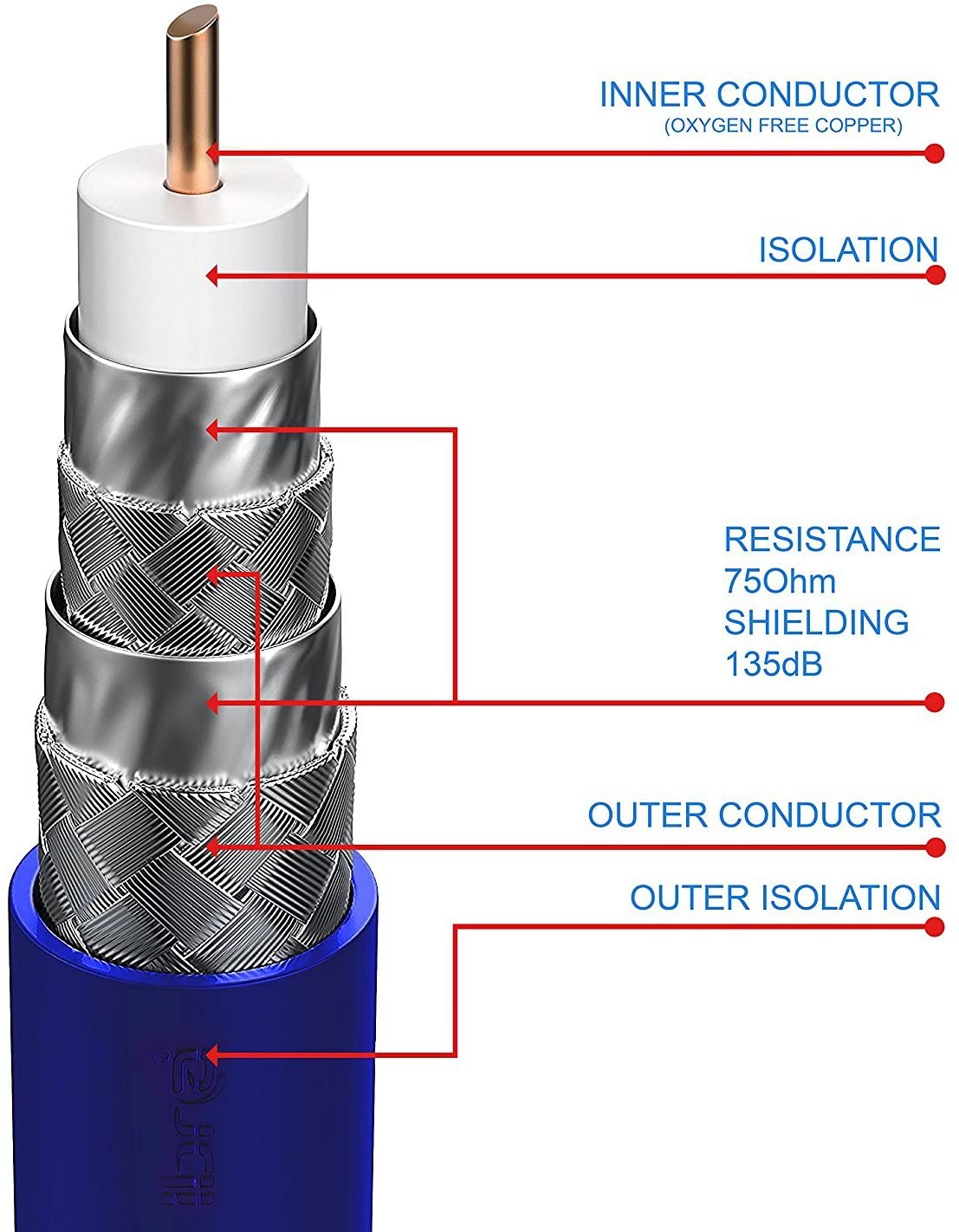Check Out The Differences Between Coaxial and Optical Cable

With time, technology has transformed the data transmission process completely. From the computer to the television along with many other electronic devices pass on data to another device through the transmission media in the form of signals. Fundamentally, there are two types of transmission media; that is guided and unguided.
The unguided media is the wireless form of communication where the electromagnetic waves transmit through the air which acts as the medium. It does not need a physical conductor. Another form is the guided media where the signals are transmitted through wires or cables. There are three types of guided media; the first one is twisted pair, another one is coaxial cable and finally, there is fiber optic cable.
So, both the coaxial and optical cables are guided media. However, there are many differences between these two most popular cables. If you want to know the main difference, then we can say that the coaxial cable transmits electronic signals whereas the optical fiber transmits an optical signal.
Let’s dig a little dig and find out other differences with the advantage and disadvantages of both types of cables.
Definition:
Optical Fiber Cable: It is one of the most popular guided media. The cable is made of glass, silica, and plastic. The signals are transformed into light and transmit through the cable. This technology follows the principle of total internal reflection of the light through the channel. Moreover, it does not pass any noise from the source to DAC circuitry.
The core of the cable is made of ultrapure silica glass surrounded by glass cladding. The glass cladding is made of plastic or less dense glass. Then there is the buffer coating which is a plastic jacket to save the cable from external moisture, wear and tear. And finally, the whole cable is coated with an outer covering made of plastic, Teflon, or fibrous plastic.
The design of the cable is made in such a way that it always maintained the required density of the two materials. For that reason, the light travelling through the core of the cable reflects off without refracting into the cladding. The signals in the optical fiber are encoded as the on and off of the flashes of light that decoded as the binary 1 and 0.
It is very difficult to install optical fiber as it is made of glass. Depending on the category of the cable, you have to install the repeater at 2km to 20 km. It also has two subcategories; single-mode and multimode fiber. LED and lasers are also used as the light-medium for optical fiber.

Coaxial Cable: This is another form of guided media where the signals are transmitted in the form of electron and low voltage electricity. It is also known as coax. The signals are transmitted as electron through the cable that works as the conductor.
The conductor is usually made of copper place at the core of the cable covered with an insulating sheath. The sheath is also covered with an outer conductor of either metal braid or foil or the combination of these two. This external case acts as the protection against the outer noise and also works as the second conductor. Finally, there is a plastic covering to protect the cable from wear and tear. The coaxial cable came as the alternative to the Ethernet cable. The main functionality of this cable is to transmit the cable TV signals.

Attenuation
Optical Fiber Cable:
While transmitting the signals through the cable, there are some losses of energy which is called attenuation. There are different factors that are responsible for attenuation like dispersion, absorption, scattering, and bending. It also depends on the length of the cable as well.
Dispersion: While the signal is transmitting through the fiber, it does not follow the same path specified earlier. This phenomenon can cause high distortion.
Absorption: For the heating of the ion impurities, while traveling through the core the light gets dimmer. This is called light energy’s absorption.
Scattering: Due to unstable microscopic material density and fluctuating density, the loss of signal in the optical cable is generated.
Bending: The bending of the cable may produce a loss of signals. Along with that; it comes with two conditions. In the first condition; the whole cable bend causes the further reflection of the light or cladding loss. In another condition, the slight bending of the cladding can cause unnecessary reflections of the light at different angles.

Coaxial Cable:
For the coaxial cable, the attenuation can occur for the length and frequency. There are many types of losses like dielectric loss, resistive loss, and radiated loss.
Dielectric Loss: When the frequency is high, it may cause dielectric loss. It also increases linearly.
Resistive Loss: The conductor’s resistance is responsible for this loss. Moreover, the flowing current often produces heat and it enhances the resistance. The actual area is limited by the skin effect while the rising frequency helps it to become more apparent.
Radiated Loss: This loss is quite lesser than the rest two types of losses. In case the cable has a poor outer braid, the power radiation can cause interference.

Application:
Fiber Optical Cable:
This cable is hugely used to transmit optical frequency. For that reason, gadgets like HDTV, aircraft, and surgical processes in the medical industry use this cable.
Coaxial Cable:
To transmit radio frequency signals; people use this coaxial cable. This cable is hugely popular in industries like telephone and internet connection.
Differences of the Optical Fiber Cable and Coaxial Cable At a Glance:
Here we will take a quick look at the rest of the differences between the optical fiber cable and coaxial cable:
1. The coaxial cable transmits the signal in the form of electricity but the optical fiber carries the signal in optical form.
2. Coaxial cable is manufactured with metal wire like copper, plastic, and metal mesh braid whereas the optical fiber cable is manufactured of glass fiber as well as plastic.
3. Coax cable has the problem of noise but the optical fiber cable is better efficient to keep it away. This is because the optical fibers are not affected by the external magnetic field like a coaxial cable.
4. Coax cable is more affordable than optical fiber cable.
5. There is no effect on the quality of the transmission for the bending of the coax cable. However, the transmission quality is affected by the bending of the optical fiber cable.
6. The bandwidth and data rates are moderately high for coaxial cable but the fiber optical cable has a much higher rate than it.
7. It is very easy to install the coaxial cable. On the other hand, as the material is made of glass, the optical fiber cable needs more care, effort, and expertise to install it.
8. The coaxial cable has a larger diameter and heavier than the optical fiber cable which is thin and lightweight.
9. The coaxial cable allows the signal transmission for a shorter length comparing to the optical fiber cable that allows longer distance signal transmission.
10. The attenuation rate is much lesser in optical fiber cable as the coaxial cable transmits an electrical signal.
11. The transmission speed of the optical cable is much higher than the coaxial cable.
Finally, we will go to the advantages and disadvantages of both the cables to get a better idea about the differences.
Advantage of Optical Fiber Cable:
Noise resistance: As the data transforms into light in the optical fiber cable, the noise is not at all an issue. The external light can create some interference but the outer jacket blocks it completely.
Less Attenuation: In all the guided media, it has the best efficiency to transmit the data for a longer distance. It can run miles without the help of the regenerators.
Higher bandwidth: The fiber optical cable is known for carrying higher bandwidth.
Speed: The speed of data transmission in this cable is much higher than all the guided media.
Disadvantages of Fiber Optical Cable:
Cost: The cost of the optical fiber is much higher than any other guided media. The manufacturing cost of this cable is quite high. Moreover, the laser light source also costs a lot.
Installation: A little crack can diffuse the light to disrupt the signal. All the joints of the fiber optic cable must be polished, aligned, and tightly sealed. For that reason, the use of unsophisticated cutting and crimping tools can make it difficult to install. An experienced and efficient technician with prior knowledge of fiber optic cable installation is perfect for the job.
Delicate: As the cable is made of fiberglass, it is very delicate to use. It can be easily broken into wire in case not handled properly.
Advantages of Coaxial Cable:
Frequency Characteristics: If you compare it to the twisted pair of cable, then coaxial cable has better frequency characteristics.
Protection against interference and crosstalk: This cable is less vulnerable to interference and cross talk for the cable’s concentric construction.
Signal Support: This cable can support both analog and digital signals.
Cost: It is much affordable than the optical fiber cable.
Disadvantages of Coaxial Cable:
Lower Quality For Distance Traveling: To transmit data for a longer distance, you will need a repeater in between two communicating devices.

